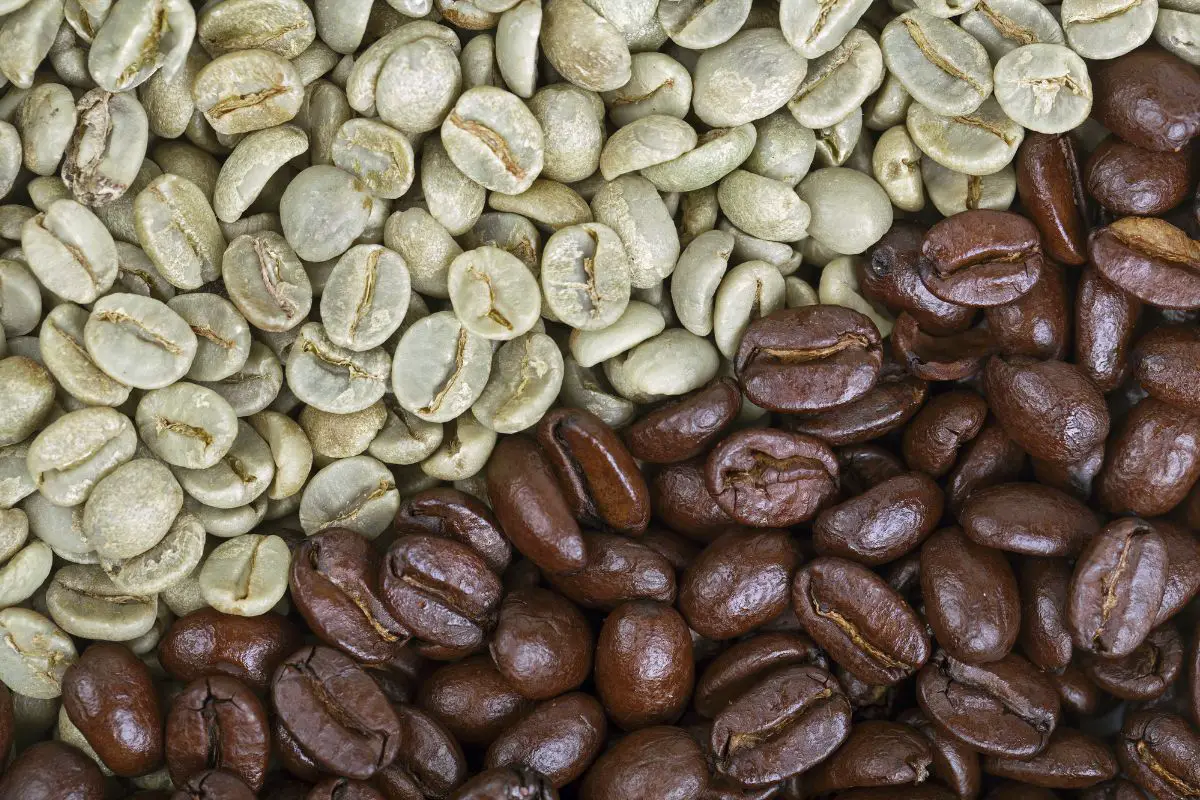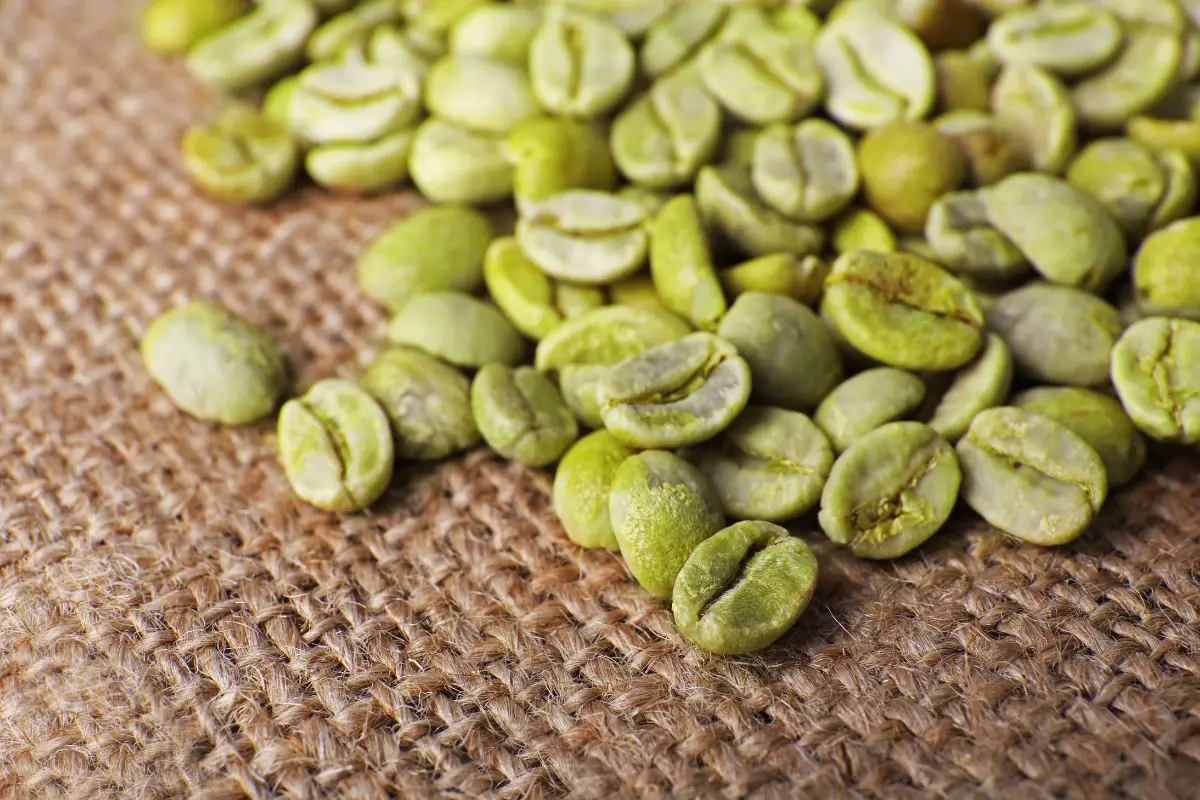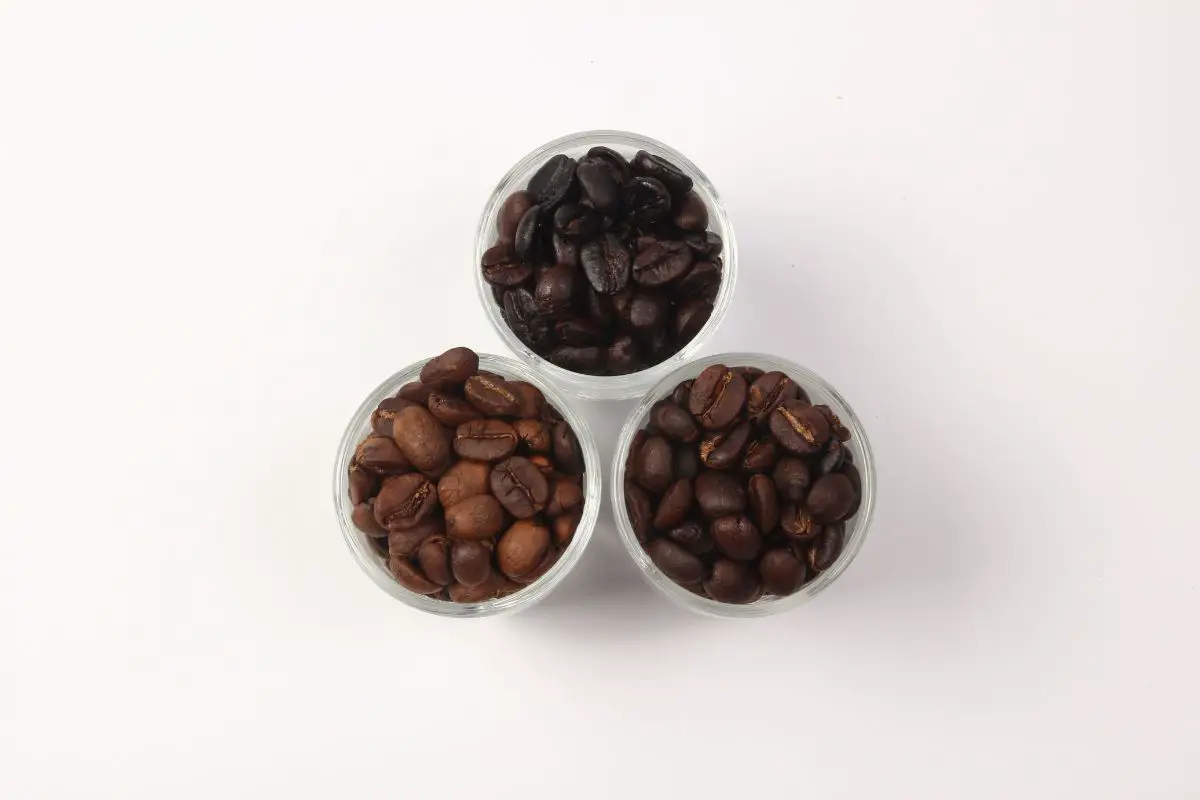The color of coffee beans depends on whether they are roasted or not. For example, unroasted coffee beans are green, while roasted coffee beans range from light brown to dark brown, or black. The final color of coffee beans before they’re ground depends on their roast levels.

The general rule of coffee roasting is, that the darker the beans, the longer the coffee roast. On the other hand, the lighter the roast, the shorter the coffee roast. This article will discuss the different coffee bean color spectrums from unroasted coffee beans to roasted coffee beans. Let’s dive in.
What Do Coffee Beans Look Like?
Unroasted Coffee Beans

Unroasted coffee beans are the seeds that develop inside a coffee cherry. Coffee cherries are fruits that grow from the coffee plant. Usually, during the harvesting stage, coffee producers pick ripe coffee cherries from the coffee plants. After the ripe cherries are harvested, the seeds or the beans are extracted from the cherry and eventually roasted. Coffee cherries are either red, pink, yellow, or orange depending on the coffee plant variation.
There are two main types of coffee plant varietal. These are Arabica and Robusta. Within the Arabica coffee plant, there are 100 more varietals, while within the Robusta coffee plant there are just a couple of varietals. The different coffee plant species determine the taste of your coffee and the caffeine concentration.
Anatomy of Unroasted Coffee Beans
A coffee cherry contains two seeds. These seeds are known as coffee beans and they are protected by several layers that must be carefully removed before the coffee bean is roasted. The coffee cherry layers include:
Exocarp
An exocarp is the coffee cherry’s outer skin. The exocarp starts as green until it ripens to yellow, orange, bright red, or pink depending on the coffee variety. However, green coffee cherries are not green coffee beans. Green coffee beans are unroasted seeds from the ripe coffee cherry.
Mesocarp
The mesocarp is the thin layer that’s beneath the exocarp. Mesocarp is commonly known as pulp. Beneath the pulp is another layer known as the mucilage. And beneath the mucilage layer is the pectin layer. All these layers are responsible for the sugars used during the fermentation process.
Endocarp
The endocarp is the parchment-like envelope that covers the coffee bean. It’s also known as the parchment or hull. This layer hardens during the maturation of the coffee bean to determine its final size.
Spermoderm
The spermoderm is another layer that’s beneath the endocarp that envelops the coffee bean. It’s also known as the epidermis or the silver skin. This layer is meant to protect the coffee bean.
Endosperm
Beneath the silver skin is the endosperm which is the actual seed or coffee bean. The parchment or endocarp is usually removed during the hulling process. Machines are used to remove the parchment and any remaining fruit. The silver skin or epidermis layer that protects the coffee bean is removed during the roasting process as chaff.
Let’s look at the color spectrum of roasted coffee beans.
Coffee Color Spectrum During the Roasting Process

Green coffee beans – These are unroasted coffee seeds or beans from the coffee cherry. They are raw, sweet, and fruity.
Pale coffee beans – These coffee beans are lighter green and you’ll observe their color at the beginning of the roasting process. At this point, the roasting temperature is about 275 degrees.
Early yellow coffee beans – These coffee beans are lime yellow and roasting at a temperature of about 330 degrees, give or take. At this point, the moisture from the coffee beans begins to evaporate.
Yellow-tan coffee beans – At about 345 degrees, the coffee beans begin to turn golden in color and they start to give off a toasted bread fragrance.
Light brown coffee beans – These beans are slightly darker than khaki chinos. At this color, the coffee beans are roasted at about 370 degrees. Additionally, the coffee beans start to shed the chaff.
Brown coffee beans – When coffee beans are brown during the roasting process, you’ll be knocking on the door of the first and second crack. The brown coffee beans are also known as the light roast.
After the first crack, there’s the medium roast, the medium to dark roast, and later the dark roast. The dark roast marks the final roast of the coffee roasting process. Dark roasts are dark in color – almost black.
While buying roasted coffee beans, it’s important to buy freshly roasted coffee beans. This is because roasted coffee beans quickly lose their flavor and aroma. Here’s how to tell if coffee beans are freshly roasted or not.
What Do Freshly Roasted Coffee Beans Look Like?
1. Look for a shiny appearance
Freshly roasted coffee beans should have a shiny oily appearance, especially for medium to dark or dark roasts. As for light roasts, they should have a dull shininess. Dark roasts are oily as a result of the long exposure to heat.
2. Check for residue
Freshly roasted coffee beans will leave a residue on your hand or inside your bag. However, don’t expect much residue for lighter roasts since they are not as oily as dark roasts.
3. Check for a Valve
Freshly roasted coffee beans will likely be placed in a bag that has a valve to degas. Degassing involves removing carbon dioxide from freshly roasted coffee beans. A bag with a valve is used to allow the exit of carbon dioxide and avoid the entry of oxygen.
4. Put the Beans in a Re-Sealable Bag
Another way of knowing whether your coffee beans are freshly roasted is by popping them in a re-sealable bag. So, put the coffee beans in a re-sealable bag and press out the air. Seal the bag and leave the beans overnight on a counter. If the bag puffs up, then the coffee beans have been freshly roasted within the first ten days. If the bag doesn’t puff up or remains straight, then the beans are not fresh.